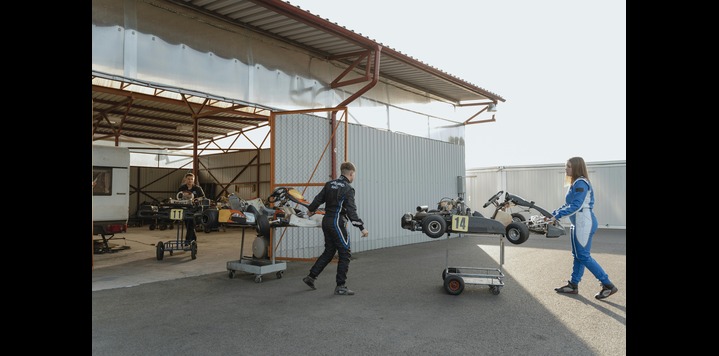Choosing the right vehicle for a sports organisation can significantly improve operational efficiency and ensure athlete comfort. With a variety of options available, the decision-making process can feel complex. However, by identifying specific needs and preferences, narrowing down choices becomes more manageable.
Factors such as vehicle capacity, accessibility, and budget play a key role in ensuring the investment aligns with the organisation’s requirements. Assessing these aspects carefully will lead to a transport solution that supports both performance and convenience. Keep reading to find out more.
Assess Your Organisation’s Needs
Before exploring vehicle options, begin by identifying your organisation’s specific requirements. Account for the number of athletes, team staff, and equipment that need transport. Will you be accommodating large groups for training sessions or competitions? Evaluating your daily transport needs will simplify the selection process.
Accessibility is equally important. Certain vehicles provide better access for athletes with disabilities. Ensure your choice allows easy entry and exit and includes adequate space for mobility aids when needed.
Additionally, consider the nature of events your team attends. If long-distance travel is frequent, fuel efficiency and comfort should be key priorities. Addressing these factors helps your team focus on performance without being hindered by travel challenges.
For organisations seeking a reliable transport solution, exploring an organisation’s pre-owned minibus inventory, such as The Minibus Centre, can prove beneficial. It offers a variety of options tailored for sports teams, providing the necessary capacity and comfort for athletes and staff alike.
Understand Budget Constraints
Budget constraints are a key factor in choosing a vehicle. While newer models can be appealing, the overall cost of ownership must be considered. This includes expenses like maintenance, insurance, fuel, and depreciation, all of which impact the long-term financial burden.
Focus on the total cost of ownership rather than just the initial price. Pre-owned vehicles often offer significant savings, making them a practical choice for organisations with tighter budgets. Exploring financing options or available funding sources can also ease financial strain and support an informed decision.
Pay attention to warranties and service agreements as well. A vehicle with a comprehensive warranty can minimise unexpected repair costs, providing greater reliability. For sports teams that depend heavily on transportation, this consideration is particularly important to ensure smooth operations without added stress.
Evaluate Safety and Comfort Features
Safety is a top priority when selecting a vehicle for your sports organisation. Look for features such as anti-lock brakes, advanced airbag systems, and electronic stability control. Reviewing crash test ratings and any safety certifications or awards can also provide valuable insight into a vehicle’s reliability.
Comfort is just as crucial, particularly for long trips. Features like climate control, supportive seating, and ample legroom can greatly enhance the travel experience for athletes and staff. Additionally, having adequate storage space for equipment ensures that everything remains secure and easily accessible during transit.
Consider advanced technology options that may be available, such as GPS navigation and entertainment systems. These features can improve travel efficiency and foster a positive atmosphere for team bonding, which helps strengthen team dynamics and morale.
Explore Vehicle Options and Features
After assessing your needs and budget, review the range of available vehicle options. Used minibuses can be a cost-effective solution, offering features tailored for group travel, such as flexible seating configurations and ample storage space for equipment.
Look for features that enhance the travel experience. Adjustable seating, for instance, can accommodate different group sizes and comfort requirements. Integrated safety features like rear-view cameras and parking sensors are also important, aiding drivers in manoeuvring through tight spaces safely.
Fuel type is another key consideration. Diesel minibuses generally offer greater fuel efficiency, making them ideal for long-distance trips, while petrol models may suit shorter, urban journeys better. Evaluating your travel patterns will help identify the most suitable option.
Taking the time to research various models ensures you have a clear understanding of market offerings. This proactive approach not only streamlines the decision-making process but also ensures your team is equipped with a reliable and suitable vehicle for their travel needs.
Test Drive and Evaluate Options
After narrowing down your choices based on needs, budget, and safety features, schedule test drives to evaluate your shortlisted vehicles. Test drives provide a hands-on opportunity to assess handling, comfort, and overall performance. Pay close attention to acceleration, braking, and noise levels during the drive.
Involve members of your organisation in the process. Athletes and staff can share feedback on their experiences with comfort, accessibility, and overall suitability. This input is invaluable and can significantly influence your final decision.
Additionally, research the reputation and reliability of the vehicle brand. Reviews and testimonials from other users can provide insights into the vehicle’s long-term performance and quality. Ensuring you invest in a reliable transport solution helps maintain your organisation’s standards.
Choosing a vehicle for your sports organisation is about more than just transportation. It’s about fostering a safe, comfortable, and efficient environment for your team. Take the time to assess your options thoroughly, as this investment is crucial for your team’s success and future growth.
